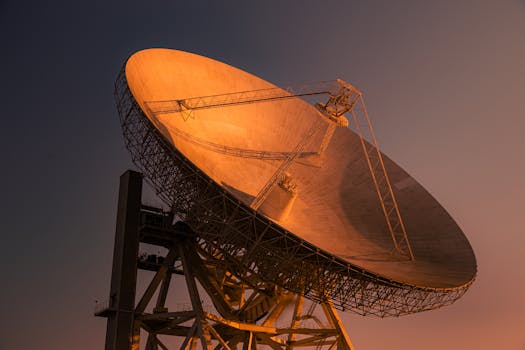Navigating Change: The Latest Trends in Satellite Telecommunications and Their Impact

Navigating Change: The Latest Trends in Satellite Telecommunications and Their Impact
The satellite telecommunications industry is undergoing significant changes, driven by technological advancements and shifting market demands. As we navigate this change, it’s essential to understand the latest trends in satellite telecommunications and their impact on the industry and society. The focus keyword, Satellite Telecommunications, is a crucial aspect of this discussion, as it encompasses the various ways in which satellite technology is used to facilitate communication and data transfer.
The increasing demand for satellite-based services, such as broadband internet, mobile connectivity, and Earth observation, is driving innovation in the industry. One of the key trends in satellite telecommunications is the development of high-throughput satellites (HTS), which offer faster data transfer rates and greater connectivity. HTS are being used to provide broadband internet services to remote and underserved communities, as well as to support the growing demand for mobile data services.
Another significant trend in satellite telecommunications is the emergence of small satellites, also known as smallsats. Smallsats are smaller, lighter, and less expensive than traditional satellites, making them an attractive option for companies and organizations looking to launch their own satellite-based services. Smallsats are being used for a range of applications, including Earth observation, communications, and scientific research.
The use of advanced propulsion systems is also becoming more prevalent in the satellite telecommunications industry. Advanced propulsion systems, such as electric propulsion and Hall effect thrusters, offer greater efficiency and maneuverability, allowing satellites to maintain their position and altitude more effectively. This is particularly important for satellites in geostationary orbit, which must maintain a stable position above the equator to provide continuous coverage.
In addition to these technological advancements, the satellite telecommunications industry is also being shaped by changing market demands. The growing demand for mobile connectivity and IoT services is driving the development of new satellite-based services, such as satellite-based cellular networks and IoT platforms. These services are being used to support a range of applications, including smart cities, transportation systems, and industrial automation.
The impact of these trends on the satellite telecommunications industry and society is significant. The increasing availability of satellite-based services is bridging the digital divide and providing access to communication and information services for remote and underserved communities. The use of satellite technology is also supporting the development of new industries and applications, such as precision agriculture and environmental monitoring.
However, the satellite telecommunications industry also faces challenges, such as the growing problem of space debris and the need for more effective regulatory frameworks. The increasing number of satellites in orbit is creating a growing risk of collisions and other accidents, which could have significant consequences for the industry and society. The development of more effective regulatory frameworks is essential to address these challenges and ensure the long-term sustainability of the satellite telecommunications industry.
In conclusion, the satellite telecommunications industry is undergoing significant changes, driven by technological advancements and shifting market demands. The latest trends in satellite telecommunications, including the development of high-throughput satellites, small satellites, and advanced propulsion systems, are having a profound impact on the industry and society. As we navigate this change, it’s essential to understand the opportunities and challenges presented by these trends and to develop effective strategies to address them.
The future of the satellite telecommunications industry is exciting and uncertain, with many opportunities and challenges on the horizon. As the industry continues to evolve, it’s essential to stay informed about the latest trends and developments and to be prepared to adapt to changing circumstances. With the right combination of technology, innovation, and regulatory frameworks, the satellite telecommunications industry can continue to thrive and provide essential services to communities around the world.